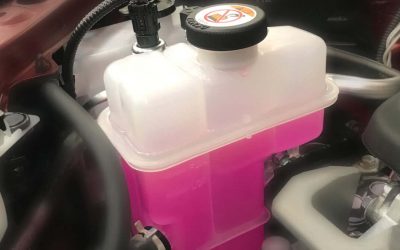It’s about time somebody came right out and told the whole story as plainly as possible, and was willing to take the inevitable flak.
Remove a radiator cap today and you might think you’re on an acid trip — you’ll see green, gold, yellow, orange, pink, red, or even blue. What are those rainbow colors telling you? Not all that much, actually. There’s a lot more to the antifreeze story than dye, but only two big practical questions: What’s the right formula to use in your customer’s car? And, is there any such thing as a universal antifreeze that’ll simplify stocking?
Old Reliable
The saga begins with the conventional American green (although Prestone used to dye it gold, and now that company’s product of the same color is something else altogether — beware of relying on color) that’s been with us for decades, and traditionally carried a two-year change interval. It consists mostly of ethylene glycol, of course, as do all antifreezes except Sierra, Prestone Lo-Tox, and perhaps a couple of others that are based on propylene glycol, none of which has achieved much market penetration. Besides the 93-95% EG, it contains up to 5% silicate and phosphate corrosion/erosion inhibitors, benzoate (an organic acid), lots of other inhibitors such as triazole (usually tolytriazole, which provides copper-brass protection), a couple of percent of water to keep things in solution, and a tiny bit of dye for leak tracing and identification (hey, what’s dripping from that car?).
There are a couple of very good things about this formula. First, the inhibitors start working almost instantly, and the kind of protection they impart to metal surfaces remains even if the coolant level should be allowed to fall and the metal is exposed to air. Also, the silicates and to a certain extent the phosphates offer the best resistance to and repair of cavitation erosion, as you might find in a water pump if the engine sees heavy loads (trailer towing in the mountains, perhaps?), which minimizes corrosion.
The only thing that’s wrong with this stuff is that its inhibitor package becomes depleted over time, hence the two-year interval mentioned. But Ford, for one, believed it was good enough to keep in there for four years or 50,000 miles. We think it’s just fine as long as you remind your customers to have regular fluid maintenance done.
To read more, download the PDF…




0 Comments